2 signature pamphlet
You can see a gallery of photos illustrating the step to make a two-signature pamphlet binding here.
You can see a gallery of photos illustrating the step to make a two-signature pamphlet binding here.
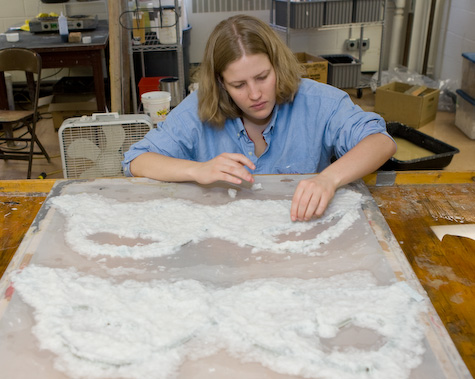
Patricia LaPointe is constructing an object out of cotton pulp and an underwire structure. First placing a “de-constructed brassiere” on synthetic silkscreen material and outlining the shape with wet cotton pulp, she builds her shape.
Continue reading…
Jean Funcke made an accordion book by couching two sheets of handmade paper with pieces of ribbon between the two sheets. Once the sheets have been dried, they can be folded to create an accordion book. Note the texture of the paper that she used. Her paper is a mix of cotton fiber and cooked straw.
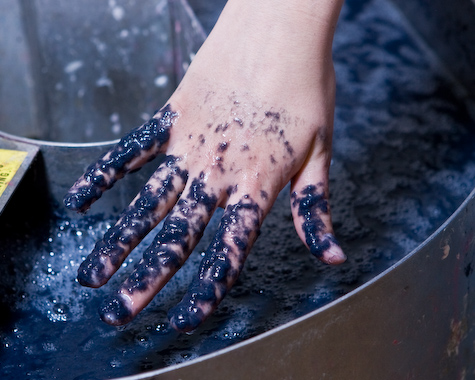
Often, in class, the question is posed. “Is this pulp beaten enough?” Often my reply is, “It depends” In Andrea Brdek’s case, this pulp is almost ready for what she wants to do.
Continue reading…
Amanda Larson, a student working with Professor Mary Hark from the Design Studies Department is working on a large screen type installation using abaca pulp in the paper mill. Below are some process photos as she is building her pieces.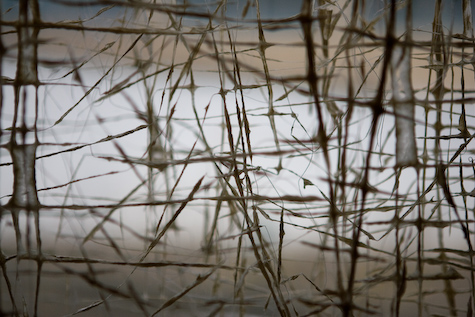
This is a detail of the piece. Continue reading…
In no way is this a complete answer, but these ten photographs quickly show you how a sheet of paper is formed and couched. Andrea and Jean work as a team to form sheets of paper from cotton fibers.

Megan Page is showing the full frame for the sheet of paper. This frame is made out of 2×4 wood with silkscreen material.

Place the frame off the floor.

Megan is illustrating the slimy nature of formation agent.

This bucket hold several gallons of abaca pulp.

Abaca pulp is added to the 5 gallon pail of formation agent.
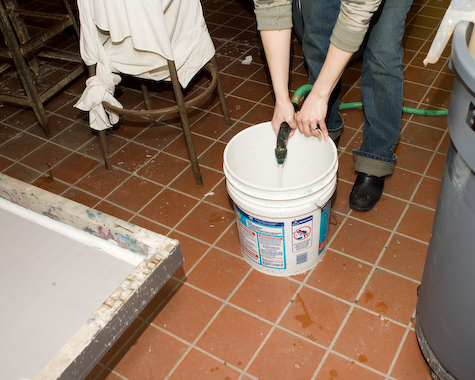
Water is added to fill the pail and mix the pulp.
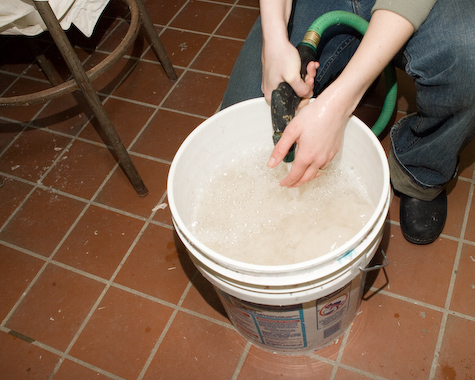
Add water until the pail is full.

A spray hose is used to dampen the screen.
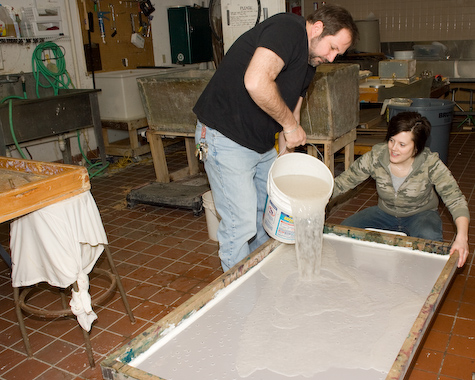
Megan secures the screen while Jim pours the pulp and formation agent onto the screen. Pour the solution as quickly as possible, without spilling it over the edge of the frame.
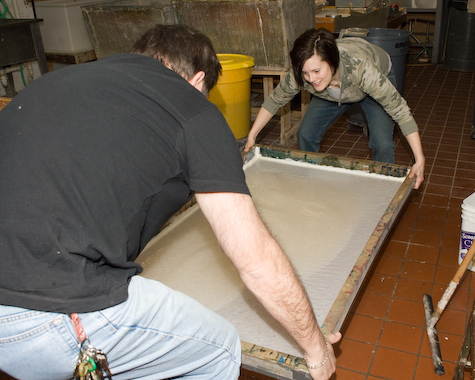
Quickly pick up the frame and rock the pulp slurry from side to side so that the pulp is distributed evenly over the frame.

The rocking may take a few minutes to allow the water to drain from the frame.
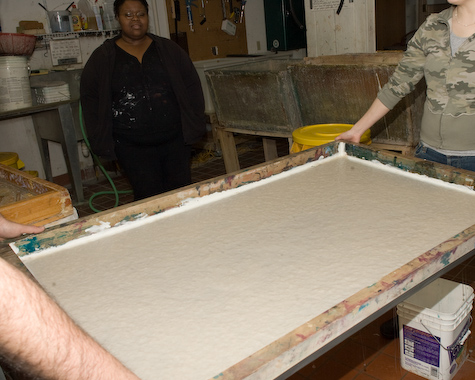
Once all of the water has drained, the wet frame can be set on supports.
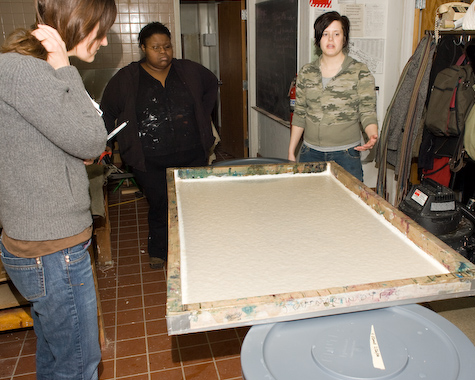
In this case, we placed the wet sheet and frame on two large trash cans.

Take the shop vac and begin to suck water from the under side of the frame. The attachment is placed on the silk screen material.

The shop vac attachment must be moved all over the sheet to remove as much water as possible.

Continue moving the attachment all over.

The sheet should be left to dry for a day or two.

Once the sheet is dry, it must be carefully removed from the screen.

Carefully remove the entire sheet from the screen.

Students inspect a dry sheet
Copyright © 2004–2009. All rights reserved.
RSS Feed. This blog is proudly powered by Wordpress and uses Modern Clix, a theme by Rodrigo Galindez.